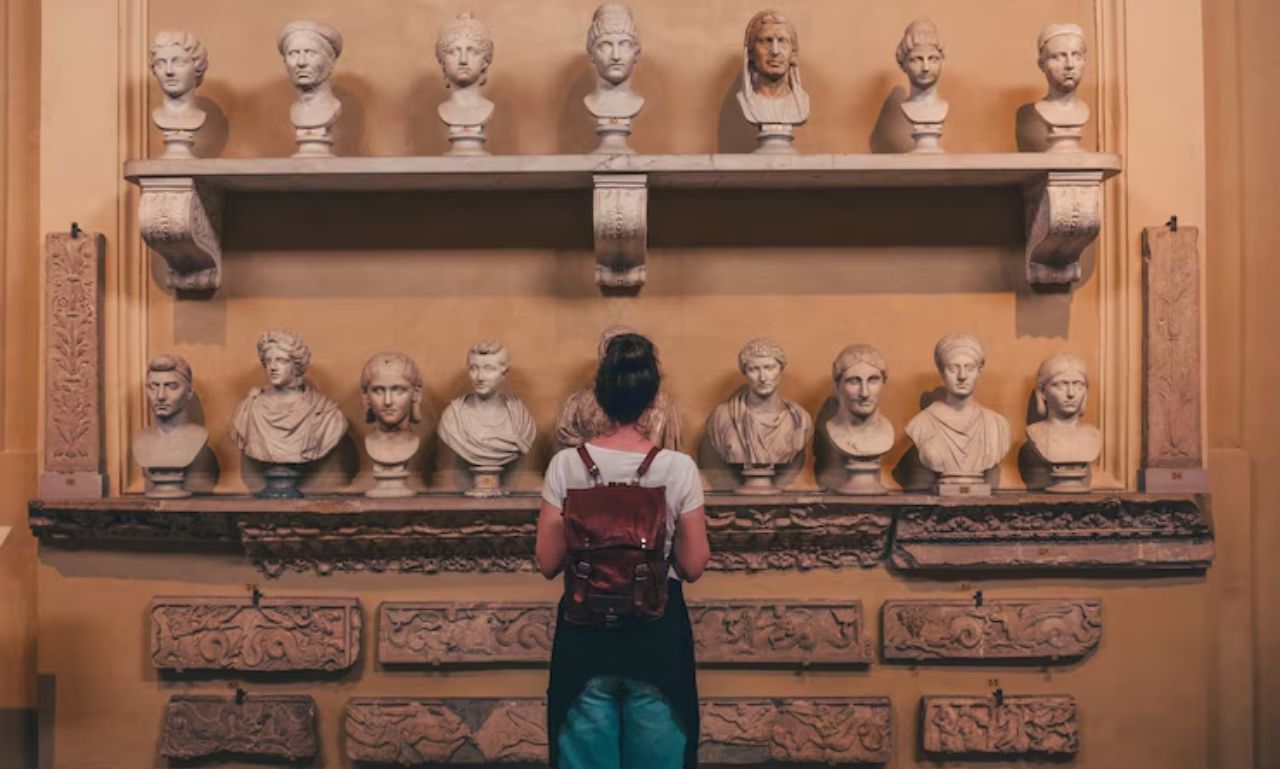Introduction: Why “Ancient Artz” Still Captivates Us Today
Au fil de l’histoire, l’art a joué le double rôle de reflet et de guide dans l’évolution de l’humanité. Parmi les périodes les plus fascinantes d’expression artistique figure l’Antiquité,Ancient Artz une époque où la créativité était brute, intentionnelle et profondément ancrée dans la vie spirituelle et collective. Actuellement, l’expression « Art Ancien » englobe une large gamme de formes artistiques qui ont vu le jour dans les premières civilisations.
Bien que les styles et les techniques aient varié, une chose reste constante : l’art ancien n’était jamais uniquement une question d’esthétique. C’était la communication. C’était la religion. It was legacy.
In this article, we’ll uncover seven extraordinary types of ancient art, analyze their cultural importance, and explore how their legacy continues to influence us today. So let’s journey through time and discover the essence of Ancient Artz.
1. Cave Paintings: The First Storytellers
Perhaps the earliest example of “Ancient Artz” comes from the dim-lit caves of prehistoric humans. These works were not just idle doodles—they were narratives, rituals, and symbols of survival.
Notable Sites:
-
Lascaux Caves (France): Over 17,000 years old
-
Chauvet Cave (France): Known for complex animal depictions
-
Altamira Cave (Spain): Famous for bison art
Transitioning to the next form of art, let’s consider how humans moved from cave walls to portable expressions of creativity.
2. Pottery and Ceramics: Art Meets Utility
Following the development of agriculture, early societies needed storage solutions. Consequently, pottery became a functional yet artistic cornerstone of ancient life. However, these vessels were more than containers—they were cultural artifacts decorated with symbols and stories.
Civilizations Noted for Pottery:
-
Ancient Greece: Known for black-figure and red-figure pottery
-
Ancient China: Introduced porcelain and complex glazing techniques
-
Native American Tribes: Created intricate coil pots with tribal motifs
Pottery reveals much about a society’s lifestyle, beliefs, and trade. In fact, archaeologists often use pottery fragments to date and understand ancient settlements.
3. Sculptures and Statues: Frozen Moments in Time
As civilizations advanced, so too did their artistic capabilities. The creation of life-sized statues and elaborate sculptures allowed people to commemorate deities, leaders, and even ordinary life.
Examples of Iconic Sculptures:
-
Venus of Willendorf: A fertility figure dating back to 28,000 BCE
-
Egyptian Sphinx: A fusion of human and lion, symbolizing power
-
Greek Statues (e.g., Discobolus): Celebrating the human form
Interestingly, these works weren’t just aesthetic—they were political tools and religious icons. Therefore, ancient sculptures deserve a prominent place in the study of “Ancient Artz”.
Now, from the tangible to the architectural—let’s delve into the monumental.
4. Architecture as Art: Temples, Tombs, and Beyond
Unlike modern buildings, ancient structures were often infused with symbolic meaning. Architecture in ancient times wasn’t just about shelter—it was a testament to power, religion, and eternity.
Notable Examples:
-
Egyptian Pyramids: Built as royal tombs, reflecting beliefs about the afterlife
-
Greek Parthenon: Dedicated to Athena, blending beauty with symmetry
-
Mayan Temples: Sacred sites aligned with celestial events
In these examples, it’s clear that structure and symbolism went hand-in-hand. Furthermore, these buildings were often decorated with reliefs, mosaics, and painted murals, adding another layer of artistry.
5. Jewelry and Adornments: Personal Expressions of Status
Moving beyond public art, let’s consider how individuals in ancient times used art in personal ways. Jewelry, body paint, and clothing were all artistic expressions, often tied to status, protection, or spiritual beliefs.
Cultural Examples:
-
Ancient Egypt: Used gold and precious stones in symbolic jewelry
-
Indus Valley: Created intricate beadwork and bangles
-
Celtic Tribes: Known for detailed metalwork in torcs and brooches
These items were often buried with their owners, signifying their importance in life and death. As a result, many pieces remain well-preserved today, giving us a glimpse into personal “Ancient Artz.”
6. Written Art: Calligraphy, Symbols, and Scripts
Another form of ancient artistry comes not from images but from written symbols. Writing systems like cuneiform, hieroglyphs, and runes are not only historical records—they are also artistic achievements in their own right.
Ancient Writing Systems:
-
Sumerian Cuneiform: One of the earliest systems using wedge-shaped marks
-
Egyptian Hieroglyphs: Picture-based language often seen in tombs
-
Chinese Calligraphy: Evolved into an art form revered for centuries
These systems allowed civilizations to preserve myths, transactions, laws, and philosophies. Additionally, the aesthetics of these scripts transformed writing into visual art.
7. Musical Instruments and Performance Art
Though less tangible than other art forms, ancient music and performance traditions played a crucial role in cultural rituals and storytelling. From flutes carved from bone to large ceremonial drums, music was integral to ancient societies.
Examples of Ancient Instruments:
-
Greek Lyres and Harps
-
Mesopotamian Drums
-
Peruvian Panpipes
Furthermore, dance, chants, and theater also counted as early performance arts. They brought communities together and often passed down oral traditions.
The Spiritual Element: Art and the Divine
In nearly all ancient cultures, art was deeply spiritual. It wasn’t created for decoration alone—it was a conduit for connecting with the divine.
Whether it was:
-
Statues of gods,
-
Mandalas representing the cosmos,
-
Or sacred cave symbols,
art served as a spiritual dialogue between humans and higher powers. This divine dimension adds depth to our understanding of ancient creativity.
How Ancient Artz Influences Modern Culture
Although separated by millennia, ancient art forms continue to influence contemporary life. Consider the following examples:
-
Architecture: Columns, domes, and symbolic facades trace back to Greek and Roman design.
-
Fashion: Jewelry designs still draw inspiration from ancient Egypt and India.
-
Visual Art: Many modern artists borrow themes and styles from tribal or ancient patterns.
Even digital artists are now incorporating ancient motifs into futuristic concepts. Clearly, “Ancient Artz” is not confined to the past—it’s evolving in real time.
Preservation and Challenges: Keeping Ancient Artz Alive
Despite their cultural importance, many ancient art forms face threats due to:
-
Looting and black-market sales
-
Environmental degradation
-
War and political instability
-
Lack of funding for conservation
Thankfully, international organizations like UNESCO and museums worldwide are actively working to preserve and restore these priceless treasures. But it’s a race against time.
Educational Impact: Teaching the Value of Ancient Artz
Incorporating ancient art into educational curricula can enrich students’ understanding of:
-
History
-
Cultural diversity
-
Creative expression
-
Symbolism and storytelling
Schools, museums, and online courses are now integrating virtual tours and 3D models of ancient artifacts to make learning more interactive and accessible.
Conclusion: Ancient Artz—A Living Legacy
Ultimately, the world of Ancient Artz is far more than a chapter in history books. It’s a testament to human ingenuity, expression, and the timeless desire to communicate and connect.
From cave walls to royal tombs, from pottery wheels to golden bangles, and from simple flutes to sacred scripts—these artistic legacies remind us where we came from and inspire where we might go.
As we preserve, study, and reimagine these works, we participate in a global and intergenerational dialogue. And that, truly, is the most profound art of all.











